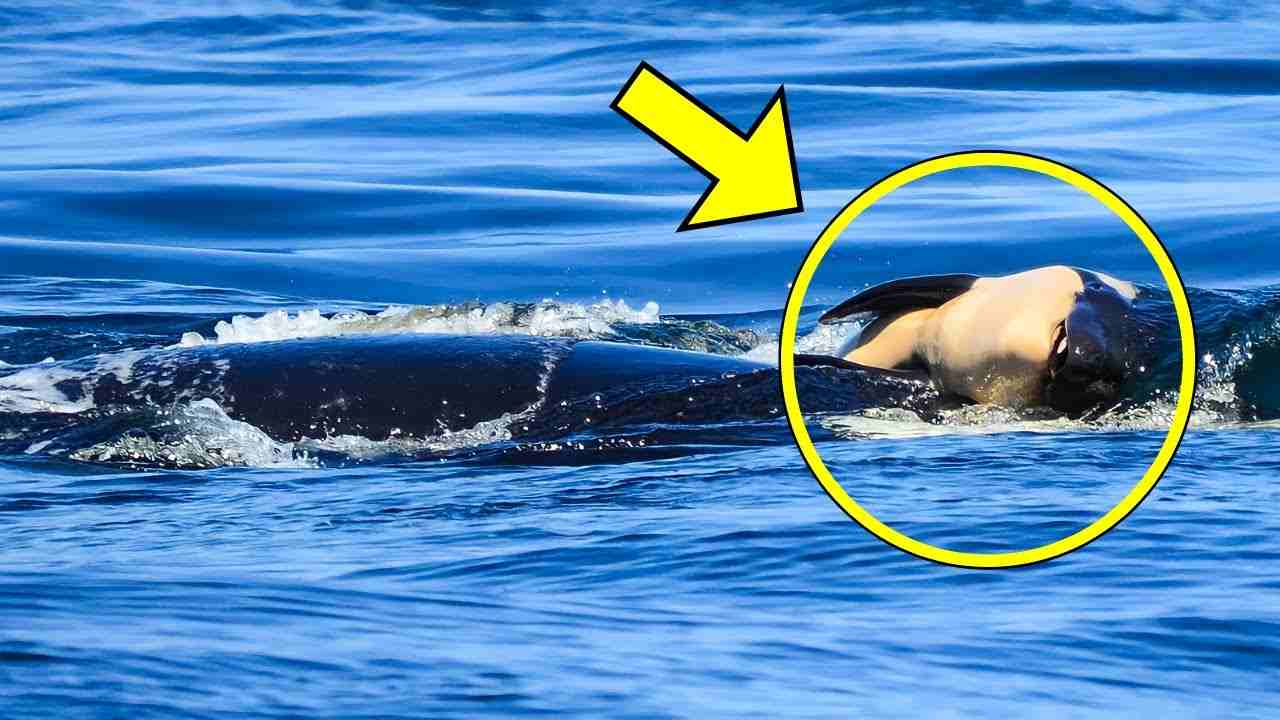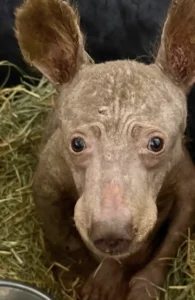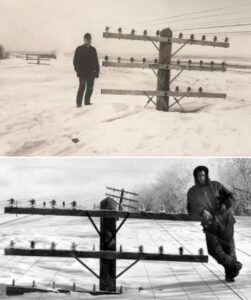In a moment that moved the world of wildlife and beyond, the orca named Tahlequah — known globally for mourning her stillborn calf in 2018 — has given birth again. The 21-year-old mother, also known as J35 in the Southern Resident killer whale population, was spotted swimming in the cool waters of the Pacific Northwest beside her healthy new baby.
For scientists, conservationists, and everyday lovers of nature, the event felt like a long-awaited sign of hope. For Tahlequah, it was redemption after heartbreak.
From Grief to Renewal
Back in 2018, Tahlequah became a symbol of maternal grief when she carried her dead newborn calf on her head for 17 days across more than a thousand miles. Her heartbreaking journey showed the world that animals experience emotion in ways humans often underestimate.
Now, years later, she’s a mother once again. On a calm September day, researchers from the Center for Whale Research confirmed that Tahlequah had delivered a healthy calf, now catalogued as J57. Both mother and baby were seen swimming energetically in the eastern Strait of Juan de Fuca, a stretch of ocean between Canada and Washington State.
Observers described the calf as “strong, active, and very closely bonded” to its mother — an encouraging sign for the struggling Southern Resident orca population.
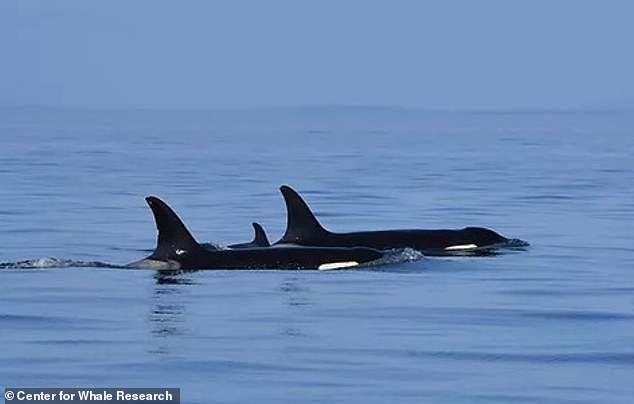
A Species Fighting for Survival
The Southern Resident orcas, a distinct group of killer whales, are among the most studied and most endangered wildlife populations in North America. Only about 70 to 75 individuals remain. Their greatest threats include dwindling salmon supplies, ship noise, and pollution that disrupts feeding and communication.
Each new birth matters. Biologists estimate that up to 40 percent of orca calves die before their first birthday — a statistic that underscores just how fragile these populations are.
Tahlequah herself had previously lost another calf years before the 2018 tragedy. For her to give birth again, and for both mother and newborn to appear healthy, is a sign that perseverance still exists in the wild.
Full Story: Man Loses 360 Pounds Naturally — Internet Rallies to Support His Next Step
A Symbol of Motherhood and Memory
Researchers and animal-behavior experts have long debated how much emotion animals truly feel. But Tahlequah erased doubt. Her 17-day vigil in 2018 was documented by marine scientists and photographers, capturing her pushing the lifeless calf’s body through currents as if unwilling to let go.
Some dismissed it as instinct. Others saw clear evidence of mourning. Either way, it forced humans to reconsider how deeply grief runs in the animal kingdom.
Now, seeing her nurture a living calf reminds many that healing is possible — not only for one mother, but for a species at risk of disappearing.
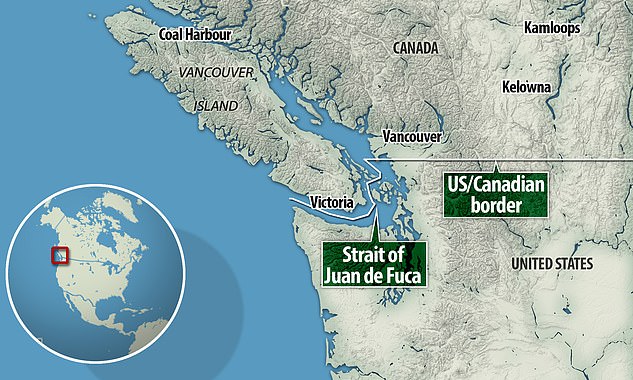
The New Arrival: A Sign of Hope
The newborn, J57, was first observed alongside J35 and other members of her pod. Scientists from the Center for Whale Research say both whales appear “vigorous and responsive.” The team continues to monitor their condition, emphasizing that the first year is critical to survival.
This latest rescue of hope within the pod comes at a time when conservation efforts are finally showing results. Reduced boat traffic during parts of the pandemic years gave orcas quieter hunting grounds, and some salmon runs have slightly improved thanks to habitat restoration. But the fight isn’t over.
The Challenges Ahead
The story of Tahlequah and her calf is beautiful, but fragile. Orcas rely on Chinook salmon — a fish species also in decline due to overfishing, dam construction, and climate change. Without enough food, pregnancies often fail or calves are born underweight.
Marine experts warn that survival will depend on collective action: restoring salmon habitats, reducing vessel noise, and tightening pollution control across the coastal waters of Washington and British Columbia.
For the orcas, every measure counts. These are social, emotional, and intelligent animals who live in tightly knit family pods, sharing food and language. When one suffers, the whole pod feels the loss.
Read Next: The Hidden Meaning Behind Princess Diana’s Cannes Gown — A Heartfelt Farewell to Grace Kelly
A Lesson in Nature’s Resilience
Tahlequah’s story isn’t just about grief or survival — it’s about endurance. Her journey mirrors the ongoing struggle of wildlife everywhere to adapt and persevere in the face of human pressure. It’s also a reminder that empathy is not a uniquely human trait.
Marine scientists say orcas display cultural traditions passed from mothers to calves: hunting techniques, vocal dialects, even social rituals. That culture is as real as our own — and equally at risk.
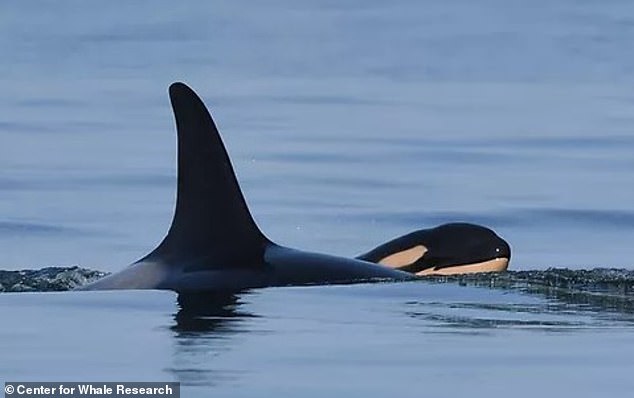
Respecting the Ocean Mothers
Following the birth, researchers issued a public plea: keep distance. Boaters, photographers, and whale-watchers are urged to stay at least 300 yards away from orcas to reduce stress and noise. Even well-meaning curiosity can disrupt feeding or communication between mother and calf.
For those watching from shore, the advice is simple — observe quietly, cherish the sight, and let nature take its course.
The Takeaway
In 2018, the world wept for a grieving orca who wouldn’t let go. In 2025, we celebrate her strength as she swims again beside her healthy calf. Tahlequah’s story is more than a viral headline; it’s a reminder that compassion, both human and animal, has the power to shape the future of our planet.
From heartbreak to new life, this mother’s journey stands as proof that rescue isn’t always about intervention — sometimes it’s about giving the wild a chance to heal itself.
